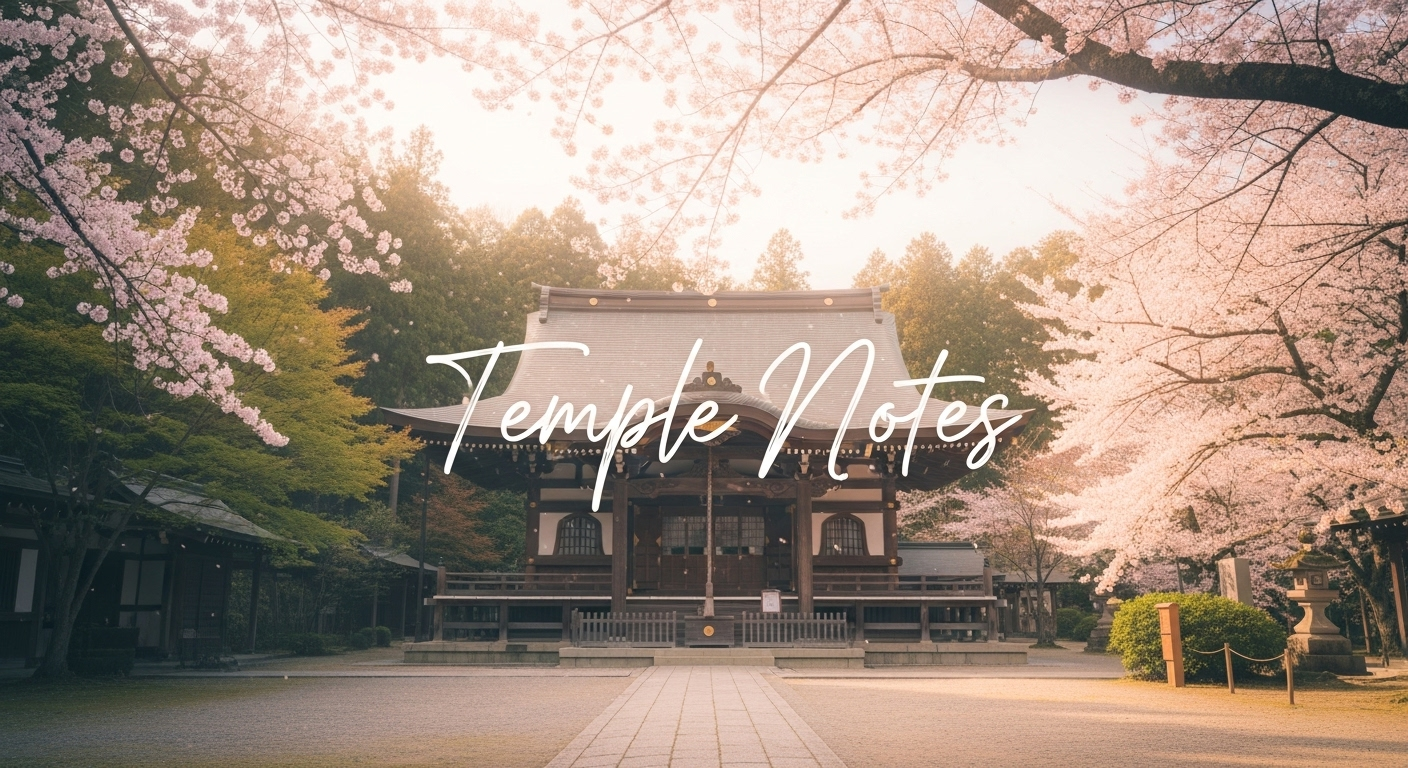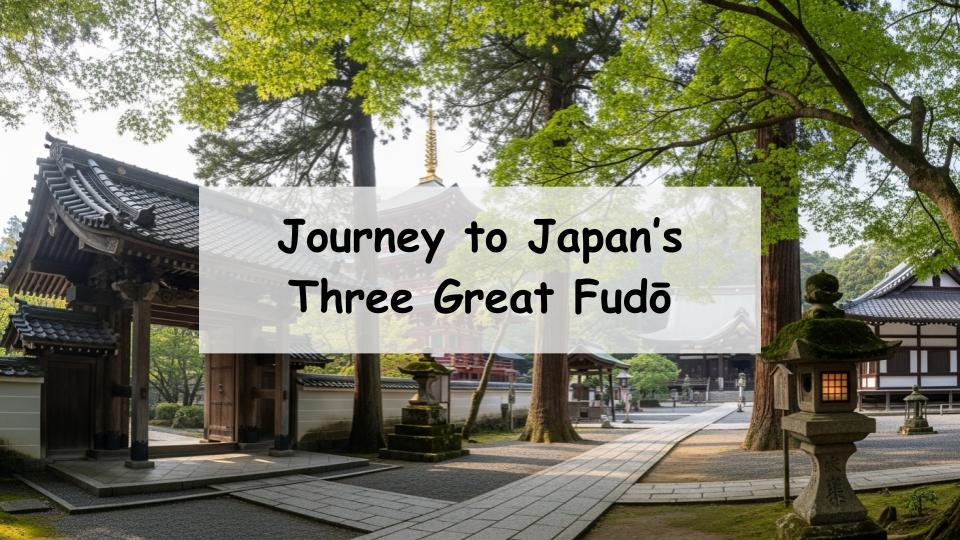If you searched for “What are the Three Great Fudō Temples of Japan?”, you may be wondering which temples are included, why they are called the “Three Great,” and what kind of blessings and unique features each temple offers. In short, the Three Great Fudō Temples of Japan refer to three of the most renowned temples dedicated to Fudō Myōō, attracting worshippers for centuries thanks to their deep spiritual traditions. In this article, we will clearly explain their origins, historical background, unique attractions, and highlights for visitors. By the end, you will gain a deeper understanding and may even feel inspired to visit them yourself.
What Are the Three Great Fudō Temples? Meaning and Origins
Who Is Fudō Myōō?
Fudō Myōō is a guardian deity in Esoteric Buddhism, depicted with a fierce expression symbolizing his power to cut through delusions and protect believers. Introduced from India and China, his worship took on unique forms in Japan, especially through fire rituals (goma), believed to remove misfortune and fulfill wishes.
Why Are They Called the “Three Great Fudō”?
Although the phrase “Three Great Fudō” is widely used, there is no single official list. The combination of temples can differ by era or region. However, Naritasan Shinshoji, Meguro Fudō, and Kihara Fudō in Kumamoto are most commonly recognized together. This variation reflects the widespread and deeply rooted nature of Fudō worship across Japan.
Common Features Among the Three
Each of the Three Great Fudō temples enshrines Fudō Myōō as its main deity and has been a center of goma rituals and ceremonies. Their grand halls, ancient traditions, and annual events continue to draw visitors, offering a sense of both sacredness and cultural richness.
History and Overview of the Three Great Fudō Temples
Naritasan Shinshoji (Chiba)
History and Highlights
Founded in 940, Naritasan Shinshoji grew into one of Japan’s largest temples through rituals of fire and purification. During the Edo period, traveling exhibitions and pilgrimages helped spread its reputation nationwide. Today, the vast temple grounds include the Main Hall, a three-story pagoda, and lively temple streets offering local food and crafts.
Blessings of Naritasan Fudō
Naritasan is especially known for prayers for warding off evil, family safety, traffic safety, and business prosperity. Goma fire rituals, tailored to each petition, remain the core of its practice, allowing visitors to directly entrust their wishes.
Meguro Fudō (Tokyo)
Loved by Edo-Era Commoners
Meguro Fudō (Ryūsen-ji Temple) has long been cherished by the people of Edo (old Tokyo). It played an important role in local beliefs, connected to water rituals and the Five Fudō temples of the city, making it a spiritual center for everyday people.
Modern-Day Appeal
Surrounded by greenery and waterfalls despite its location in the metropolis, Meguro Fudō offers a peaceful space for both worship and sightseeing. Seasonal festivals, such as Setsubun, still attract large crowds, continuing traditions from centuries past.
Kihara Fudō (Kumamoto)
Faith in Kyushu
Kihara Fudō (Gammekizan Chōju-ji) is one of the leading centers of Fudō worship in Kyushu and is often counted among the Three Great Fudō Temples alongside Narita and Meguro. It has long drawn pilgrims from the region, supported by local traditions and rituals.
Legends and Attractions
Kihara Fudō is associated with folklore such as the “Mizuhiki Fudō,” which reflect the community’s struggles and resilience against natural forces. These legends, combined with its unique ceremonies, create a strong spiritual and cultural appeal for visitors.
Why the Three Great Fudō Temples Are Special
Historical and Cultural Value
The Three Great Fudō temples are not only places of worship but also living repositories of history and culture. Their sacred statues, ancient rituals, and connections to local communities showcase the enduring role of Buddhism in Japan’s spiritual and social life.
Why People Visit from Across Japan
Fudō worship centers on prayers for protection, misfortune removal, and wish fulfillment. The ability to participate in fire rituals or dedicated ceremonies gives visitors a direct spiritual connection, making the temples highly attractive pilgrimage sites.
Tourism Appeal
Beyond their religious significance, the temples offer architectural beauty, scenic grounds, and lively temple streets. Seasonal festivals, traditional performances, and temple cuisine add layers of cultural experience for all kinds of visitors.
Guide to Visiting the Three Great Fudō Temples
Basic Etiquette
When visiting, follow temple etiquette such as cleansing hands at the basin, offering incense or coins respectfully, and refraining from disturbing other worshippers. Pay attention to signs and avoid entering restricted areas.
How to Enhance Your Prayers
For deeper blessings, it is recommended to participate in a goma fire ritual or special prayer service. Clarifying your wishes beforehand and returning later to give thanks, known as “orei-mairi,” is also an important practice.
Best Times and Events
Special occasions such as New Year’s prayers, Setsubun bean-throwing, and annual temple fairs are lively times to visit. For quieter visits, weekdays and early mornings allow you to enjoy the atmosphere more peacefully.
Conclusion|The Three Great Fudō Temples: Faith and Culture Alive
Key Takeaways
The term “Three Great Fudō Temples of Japan” most often refers to Naritasan Shinshoji, Meguro Fudō, and Kihara Fudō, though the exact trio may vary by source. Each temple carries centuries of history, unique traditions, and cultural depth, offering not only blessings but also a window into Japan’s religious heritage.
Why You Should Visit
Visiting the Three Great Fudō Temples is more than a sightseeing trip—it is an encounter with living faith, artistry, and history. By experiencing goma rituals, exploring temple grounds, and taking part in traditional events, you can connect with both the spiritual and cultural heart of Japan. If one temple catches your interest, make it your starting point and experience firsthand the enduring appeal of Fudō worship.










Comment